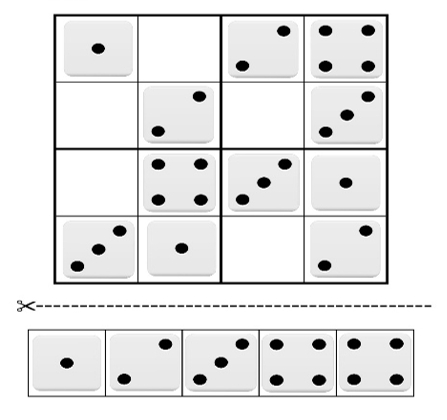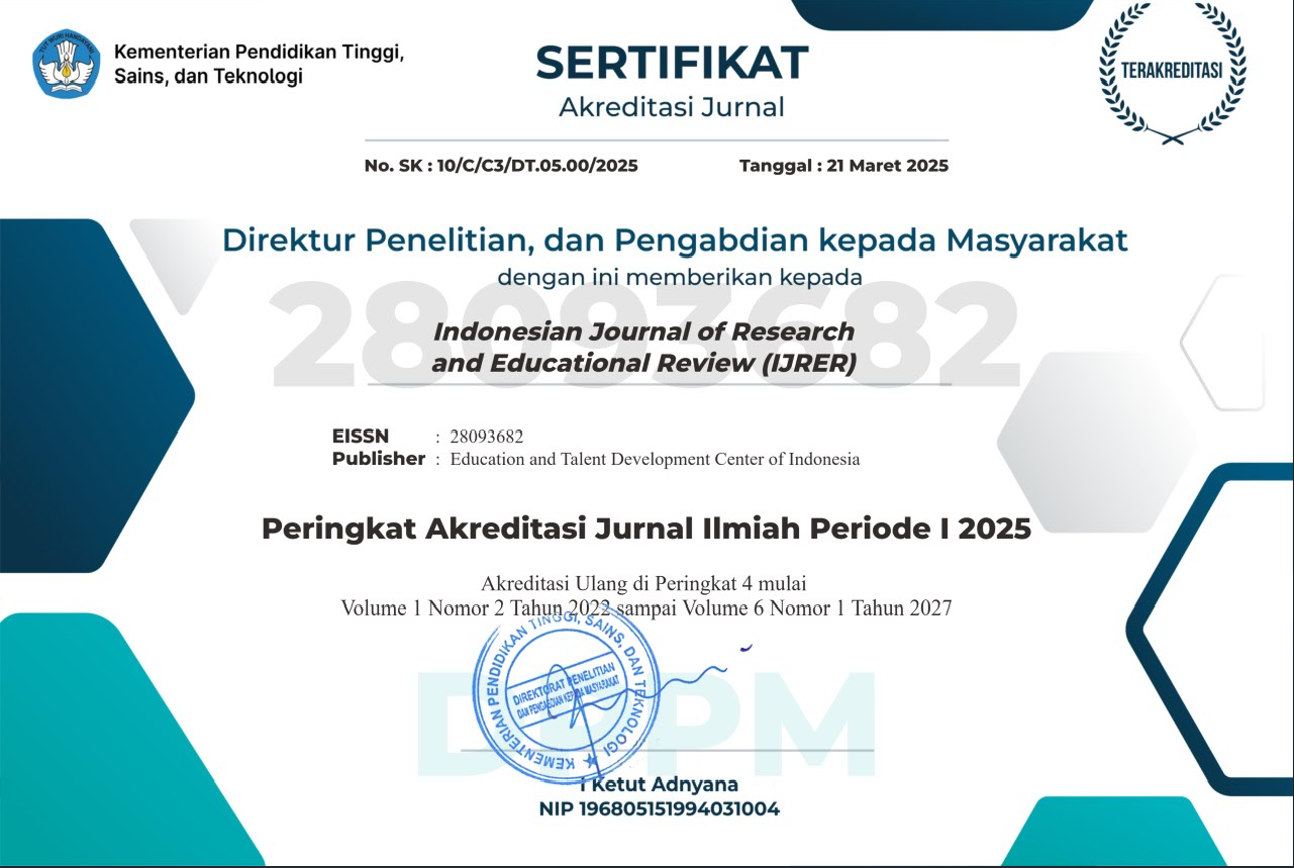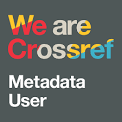Analysis of Sudoku Compilation Algorithms: Understanding Number Concepts in Students Special Needs at Extraordinary School
DOI:
https://doi.org/10.51574/ijrer.v4i4.3790Keywords:
Algorithms, Extraordinary School, Number Concepts, Students Special Needs, Sudoku CompilationAbstract
Children with autism spectrum disorder (ASD) often have difficulty understanding abstract concepts such as numbers, requiring interactive and concrete learning media. This study analyzed the systematic thinking, or algorithmic processes, of children with autism spectrum disorder as they solved complex Sudoku puzzles. Using a qualitative descriptive approach, three students with different levels of functioning at extraordinary school C TPA Jember were observed. This study used a 4x4 dot Sudoku game with pictures as a more easily understood learning medium. Data analysis was conducted by comparing data from the work results, visual documentation, and field notes. Data analysis used an interactive qualitative approach based on Miles and Huberman. The results indicated that picture Sudoku can support the algorithmic thinking of children with ASD, although the level of success varies based on individual abilities. Students with lower functional levels require full guidance, but students with higher functional levels lack sufficient independence and problem-solving skills. The conclusion of this study is that picture Sudoku has proven to be an effective tool for improving the algorithmic thinking of children with autism, highlighting the importance of concrete and adaptive learning media.
References
Adako, O., Adeusi, O., & Alaba, P. (2024). Integrating AI tools for enhanced autism education: a comprehensive review. International Journal of Developmental Disabilities, 1-13. https://doi.org/10.1080/20473869.2024.2392983
Angeli, A., & Tukino, T. (2024). Rancang Bangun Game Sudoku Android Berbasis Flutter. Computer Based Information System Journal, 12(1), 52–62. https://doi.org/10.33884/cbis.v12i1.8249
Arsyad, M., Mujahiddin, M., & Syakhrani, A. W. (2024). The efficiency of using visual learning media in improving the understanding of science concepts in elementary school students. Indonesian Journal of Education (INJOE), 4(3), 775-787. https://www.injoe.org/index.php/INJOE/article/view/57
Dahlstrom-Hakki, I., & Wallace, M. L. (2022). Teaching statistics to struggling students: Lessons learned from students with LD, ADHD, and autism. Journal of Statistics and Data Science Education, 30(2), 127-137. https://doi.org/10.1080/26939169.2022.2082601
Damayanti, A., Delima, I. D., & Suseno, A. (2023). Pemanfaatan Media Sosial Sebagai Media Informasi dan Publikasi (Studi Deskriptif Kualitatif pada Akun Instagram @rumahkimkotatangerang). Jurnal PIKMA : Publikasi Ilmu Komunikasi Media Dan Cinema, 6(1), 173–190. https://doi.org/10.24076/pikma.v6i1.1308
Dewi, S., & Morawati, S. (2024). Gangguan Autis pada Anak. Scientific Journal, 3(6), 404–417. https://doi.org/10.56260/sciena.v3i6.177
Yahfizham, H. F. (2023). Studi Kasus Penerapan Algoritma Dalam Kehidupan Sehari-Hari. Al Ittihadu, 2(2), 214-226.. https://jurnal.asrypersadaquality.com/index.php/alittihadu
Fitria, R. A., Naimah, N., & Diana, R. R. (2021). Pengaruh Media Kartu Angka (Flash Card) Terhadap Peningkatan Pemahaman Konsep Bilangan pada Anak Autism. Aulad: Journal on Early Childhood, 4(3), 213–218. https://doi.org/10.31004/aulad.v4i3.119
Geo, I., Hatip, A., Setiawan, W., & Tri Eka Silver, S. (2022). Analisis Kemampuan Komunikasi Matematis Siswa Autis Dalam Pemecahan Masalah Matematika Operasi Hitung Dasar Aritmatika. Paedagoria : Jurnal Kajian, Penelitian Dan Pengembangan Kependidikan, 13(2), 166. https://doi.org/10.31764/paedagoria.v13i2.10491
Habibi, F., Sedaghatshoar, S., Attar, T., Shokoohi, M., Kiani, A., & Malek, A. N. (2025). Revolutionizing education and therapy for students with autism spectrum disorder: a scoping review of AI-driven tools, technologies, and ethical implications. AI and Ethics, 1-16. https://doi.org/10.1007/s43681-024-00608-1
Hasan, M., & Yahfizham. (2023). Pengenalan Algoritma pada Pembelajaran Pemrograman Komputer. Comit: Communication, Information and Technology Journal, 2(2), 285–299. https://doi.org/10.47467/comit.v2i2.1386
Hofmann, V., & Müller, C. M. (2021). Language skills and social contact among students with intellectual disabilities in special needs schools. Learning, Culture and Social Interaction, 30, 100534. https://doi.org/10.1016/j.lcsi.2021.100534
Indriyono, B., Pamungkas, N., Pratama, Z., Mintorini, E., Dimentieva, I., & Mellati, P. (2023). Comparative Analysis of the Performance Testing Results of the Backtracking and Genetics Algorithm in Solving Sudoku Games. International Journal of Artificial Intelligence & Robotics (IJAIR), 5(1), 29–35. https://doi.org/10.25139/ijair.v5i1.6501
Khatab, S., Hijab, M. H. F., Othman, A., & Al-Thani, D. (2024). Collaborative play for autistic children: A systematic literature review. Entertainment Computing, 50, 100653. https://doi.org/10.1016/j.entcom.2024.100653
Labib, F. (2025). Apa Itu Algoritma? Pengertian, Ciri-Ciri, Jenis, dan Contohnya dalam Kehidupan Sehari-hari. Telkom University. https://telkomuniversity.ac.id/apa-itu-algoritma-pengertian-ciri-ciri-jenis-dan-contohnya-dalam-kehidupan-sehari-hari/
Lutfi, A., & Sari, A. A. I. (2022). Analisis Alur Belajar Matematika Siswa Inklusi Jenis Kebutuhan Autisme. Andragogi: Jurnal Diklat Teknis Pendidikan Dan Keagamaan, 10(2), 187–194. https://doi.org/10.36052/andragogi.v10i2.294
Mahrozi, N., & Faisal, M. (2023). Analisis Perbandingan Kecepatan Algoritma Selection Sort Dan Bubble Sort. Jurnal Ilmiah Sain Dan Teknologi, 1(2), 89–98.
Rahayu, D. S., Suryapratama, A., Amongsaufa, A. Z., & Koloay, B. I. K. (2017). Evaluasi Algoritma Runut Balik Dan Simulated Annealing Pada Permainan Sudoku. Jurnal Teknik Informatika Dan Sistem Informasi, 3(1), 169–178. https://doi.org/10.28932/jutisi.v3i1.592
Rani, P., & Reni, N. (2021). Kesulitan belajar siswa SMP mengenai kemampuan koneksi matematis pada materi statistika. Plusminus : Jurnal Pendidikan Matematika, 1(1), 145–156. https://journal.institutpendidikan.ac.id/index.php/plusminus/article/view/pv1n1_12
Rohmaniyah, D., Negeri, S., Bojonegoro, B., & Abstrak, A. I. (2023). Penggunaan Metode Multisensori dalam Pengenalan Konsep Angka Siswa Autis Kelas II di SLB. Jurnal Inovasi Pedagogik dan Teknologi, 1(2), 134-138. http://www.journal.arthamaramedia.co.id/index.php/jiptek
Sembiring, T. Y., Silangit, M. S. U., Purba, R. R., & Manik, E. (2024). Implementasi Permainan Sudoku Dalam Meningkatkan Pertumbuhan Kognitif Siswa Dalam Lingkungan Belajar. Jurnal Curere, 8(1), 112-119. http://dx.doi.org/10.36764/jc.v8i1.1317
Sofwatillah, Risnita, Jailani, M. S., & Saksitha, D. A. (2024). Teknik Analisis Data Kuantitatif dan Kualitatif dalam Penelitian Ilmiah. Journal Genta Mulia, 15(2), 79–91. https://ejournal.uncm.ac.id/index.php/gm/article/view/1147
Tansya, T., Utami, N. A., Nababan, E. B., & Susilo, B. E. (2024). Media Pembelajaran Matematika Dalam Permainan Sudoku: Systematic Literature Review. In PRISMA, Prosiding Seminar Nasional Matematika (pp. 489-495).
Yenni, E., & Anisa, R. S. (2021). Pola Komunikasi Antara Guru dengan Anak Autis dalam Proses Belajar Mengajar di SLB-C Syauqi Day Care Serdang Bedagai. Jurnal SOMASI (Sosial Humaniora Komunikasi), 2(1), 44–50. https://doi.org/10.53695/js.v2i1.428
Zhang, M., Ding, H., Naumceska, M., & Zhang, Y. (2022). Virtual reality technology as an educational and intervention tool for children with autism spectrum disorder: current perspectives and future directions. Behavioral Sciences, 12(5), 138. https://doi.org/10.3390/bs12050138

Downloads
Published
How to Cite
Issue
Section
License
Copyright (c) 2025 Halimatus Sakdiyah, Dimas Andhita Cahyo Sujiwo, Indah Rahayu Panglipur

This work is licensed under a Creative Commons Attribution-ShareAlike 4.0 International License.









1.png)













